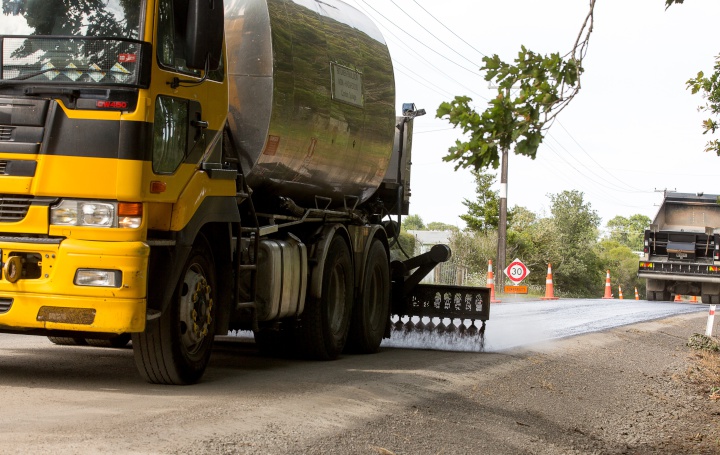Government’s Infrastructure Strategy Response A Positive Start
The Government’s response to the national 30-year Infrastructure Strategy released by the New Zealand Infrastructure Commission Te Waihanga is a welcome starting point, but illustrates there is a lot of work to go to resolve the country’s infrastructure challenges.

A bitumen sprayer truck performing a re-seal
Civil Contractors New Zealand Chief Executive Alan Pollard welcomed the Government’s response to Rautaki Hanganga o Aotearoa – New Zealand Infrastructure Strategy 2022–2052, saying it was promising to see the government taking steps to overcome the country’s infrastructure deficit and support industry through change.
“The infrastructure strategy will inform our approach for the next 30 years. It gives industry and government vision and clarity. The government’s response is promising and provides us with a positive place to start in working towards better outcomes for NZ communities.”
He said the government’s response to the 67 recommendations provided in the strategy also demonstrated the scale and scope of the challenges the country faced in terms of infrastructure construction and provision.
Industry welcomed many of the initiatives in the Government’s response, such as support for increased construction waste minimisation, a clearer pipeline of work that enabled industry to invest in capability and capacity, support for emissions reduction, availability of technology, equipment and resources, and supporting people to join the workforce.
However, there were also risks, including a risk Government would overlook successful work currently in progress within industry in favour of its own transformation plans, Mr Pollard said.
“While it’s positive to see the Government take ownership of its lead role in delivering on the Strategy, there is also a risk it will use it to support its own programmes, and overlook the many valuable solutions already in play within industry, rather than create genuine partnerships for change.”
He said key examples could be found in the successful Infrastructure Skills Centre pilot conducted in 2021 to provide an entry point for aspirational trade careers in civil infrastructure, and in the lack of mention or detail on the physical construction of horizontal infrastructure in many recent government reports.
Much of the response was also contingent on the success of ongoing reforms such as the Resource Management Act, education system and local government – all things that would require close interaction with industry to achieve the Strategy’s goals, Mr Pollard said.


 Mānuka Charitable Trust: Mānuka Charitable Trust Warns Global Buyers Of Misleading Australian Honey Claims
Mānuka Charitable Trust: Mānuka Charitable Trust Warns Global Buyers Of Misleading Australian Honey Claims  Engineering New Zealand: NZ Building System Needs Urgent Improvement
Engineering New Zealand: NZ Building System Needs Urgent Improvement GNS Science: Bioshields Could Help Slow Tsunami Flow
GNS Science: Bioshields Could Help Slow Tsunami Flow Transport and Infrastructure Committee: Inquiry Into Ports And The Maritime Sector Opened
Transport and Infrastructure Committee: Inquiry Into Ports And The Maritime Sector Opened Netsafe: Netsafe And Chorus Power Up Online Safety For Older Adults
Netsafe: Netsafe And Chorus Power Up Online Safety For Older Adults RBNZ: 10 Cent Coin With King Charles III Image Now In Production
RBNZ: 10 Cent Coin With King Charles III Image Now In Production


